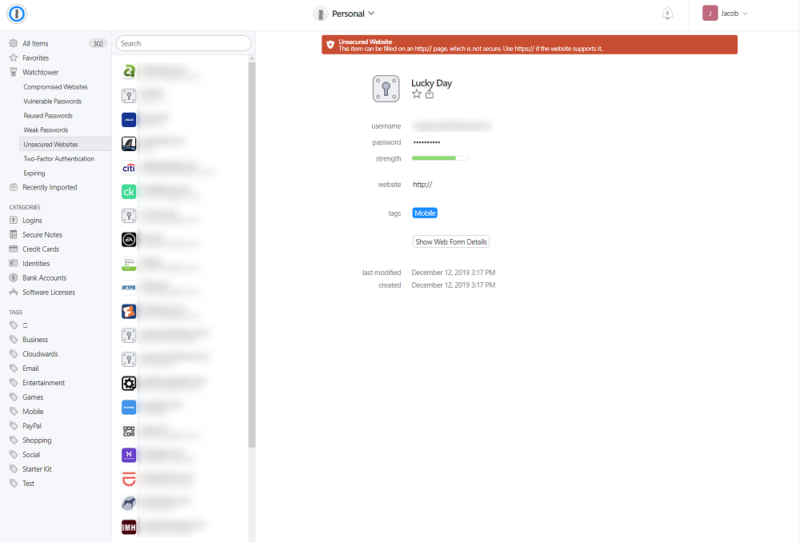

Now logging in to 1Password will require both your master password and a time-based one-time password (TOTP). Scan the displayed barcode with your authenticator app enter the resulting six-digit code, and you're done. 1Password requests your master password at this point. To enable multi-factor authentication, log in to your account online, click your name at top right, and choose My Profile > More Actions > Turn On Two-Factor Authentication. We wholeheartedly recommend you enable multi-factor authentication since you can never be too cautious about protecting access to a password manager that potentially houses credentials to financial, medical, and other important services. Now that same thief would need both your master password and Secret Key to gain access.ġPassword supports app- and U2F key-based multi-factor authentication, which is a beneficial extra layer of security. But in a case such as this you can, for total security, log into the web console, click My Profile, and deactivate the stolen device. If your activated device gets lost or stolen, a thief would still need your master password to access your credentials.
1password help code#
If you're installing one of 1Password’s desktop apps, copy that QR code to the clipboard for import, tell 1Password to find the QR code on screen, or scan it from an image.
1password help android#
After installing the app on an Android or iOS device, for example, 1Password allows you to snap a QR code that fills in all your information except the master password.

You do need the Secret Key for each installation, but you don't necessarily have to type it. With your account finalized, it's time to set up 1Password’s apps. You can download your Emergency Kit at any time from your account page on the web. Print or save the document, fill in the master password, and stick it in your fireproof lockbox, store it digitally in a secured location, or both.
1password help pdf#
To help you manage your Secret Key, 1Password prepares a download link for your Emergency Kit, a PDF containing your account email, Secret Key, and space for you to write down your master password. Each time you add a new device or browser extension, you need this key. This massive string of 34 letters and digits is separated by hyphens into seven blocks of varying sizes. Next, you create a strong master password, which should be easy to both remember and something that nobody else would guess.īefore you dive into the interface 1Password greets you with a pop-up displaying your Secret Key.

You don’t need to provide your credit card info up front for a trial, which we appreciate.

1password help verification#
Next, you enter a verification code 1Password sends to your email. To sign up for a 1Password account, you start by entering your name and email address. This is problematic since our favorite free password managers, such as MyKi and Bitwarden, match many of 1Password’s capabilities. LastPass Premium is $36 per year and Sticky Password is $29.99 per year.Īlthough 1Password offers a 14-day trial, it does not have a permanently free version. Businesses can set up a 1Password team account, starting at $3.99 per user per month.įor comparison, Dashlane starts at the same price of $35.88 per year, but this tier limits you to syncing with two devices and does not provide any encrypted storage. Keeper Password Manager & Digital Vault has a similar family plan that features five licenses plus 10GB of secure online storage. You can add users for an extra $1 per month. Best Hosted Endpoint Protection and Security SoftwareġPassword’s Families plan costs $59.88 per year.


 0 kommentar(er)
0 kommentar(er)
